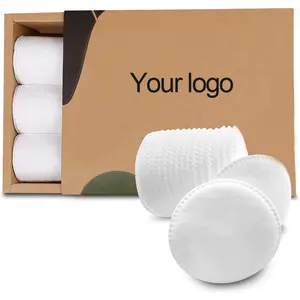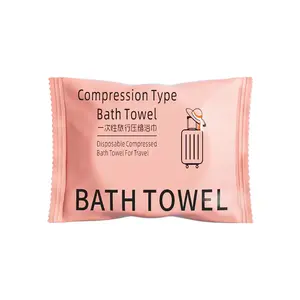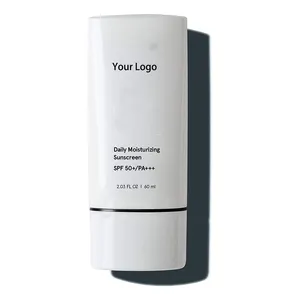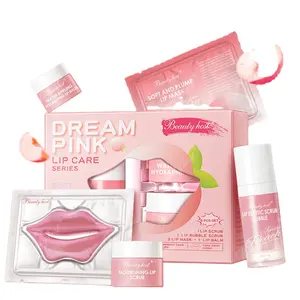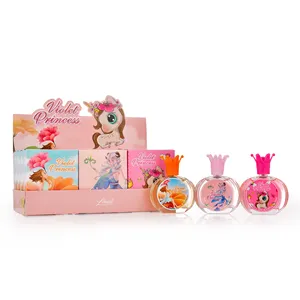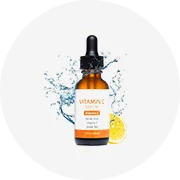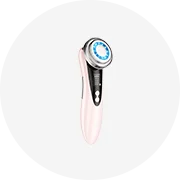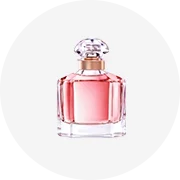Phổ biến trong ngành của bạn






Fentech Hàng Rào Chuồng Ngựa Bằng Nhựa Vinyl Pvc, Hàng Rào Cột Và Đường Sắt, Hàng Rào Trang Trại
66.445 ₫ - 86.303 ₫
Đơn hàng tối thiểu: 400 Foot/Feet




Longjie Nhà Máy Trực Tiếp Giá 6ft X 8ft Trắng 4 Rails PVC Nhựa Vinyl Trang Trại Paddock Ngựa Hàng Rào
90.885 ₫ - 112.015 ₫
Đơn hàng tối thiểu: 20 Foot/Feet







Fentech tùy chỉnh nhựa Vinyl ngựa paddock giá rẻ hàng rào tấm, Bán buôn 3 đường sắt PVC lĩnh vực ngựa hàng rào
246.432 ₫ - 277.236 ₫
Đơn hàng tối thiểu: 500 Mét







Longjie Trắng 5ft X 8ft Thiết Kế Hiện Đại 3 Rails PVC Nhựa Vinyl Đùn Trang Trại Paddock Ngựa Hàng Rào
79.429 ₫ - 98.522 ₫
Đơn hàng tối thiểu: 20 Foot/Feet







Hot Bán USA 12 Ft Nhiệm Vụ Nặng Nề Chăn Nuôi Gia Súc Corral Kim Loại Hàng Rào Nhôm Ngựa Trang Trại Slat Hàng Rào Tấm
356.410 ₫ - 585.531 ₫
Đơn hàng tối thiểu: 30 Cái
Vận chuyển mỗi chiếc: 6.123.627 ₫







3 đường sắt PVC trang trại hàng rào trắng, 4 đường sắt PVC hàng rào bài và Đường sắt, ngựa paddock hàng rào
356.410 ₫ - 585.531 ₫
Đơn hàng tối thiểu: 50 Mét
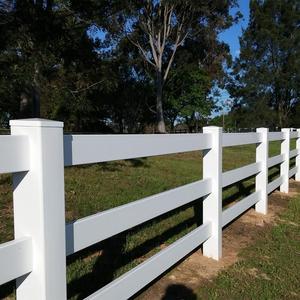

Hàng Rào Ngựa 3 Ray Nhựa PVC Vinyl Trắng Giá Rẻ Chống Tia Cực Tím, Hàng Rào Ngựa Pvc Để Bán
76.374 ₫ - 91.649 ₫
Đơn hàng tối thiểu: 1000 Foot/Feet



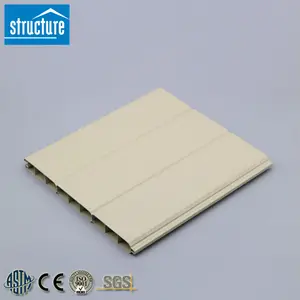

3 Đường Ray Bài Và Đường Sắt Trắng PVC Ngựa Hàng Rào Trang Trại
73.319 ₫ - 91.903 ₫
Đơn hàng tối thiểu: 350 Foot/Feet
Vận chuyển mỗi chiếc: 260.943 ₫






Bán Buôn Kích Cỡ Khác Nhau Dễ Dàng Để Lắp Ráp Trắng Nóng Bán Giá Rẻ Nhựa Ranch MỤC VỤ Trang Trại PVC Hàng Rào Ngựa 3 Đường Sắt Hàng Rào
127.290 ₫ - 203.663 ₫
Đơn hàng tối thiểu: 800 Foot/Feet






Hàng Rào Vinyle Trắng Của Mỹ Cho Đồng Cỏ Ngựa (4 Đường Ray Mỗi Phần)
254.579 ₫ - 636.446 ₫
Đơn hàng tối thiểu: 10 Cái






PVC Trang Trại Hàng Rào, Giá Rẻ Trắng Nhựa Vinyl PVC Ngựa Paddock Ranch Hàng Rào UV Kháng 3 Đường Sắt Ngựa Nhựa Vinyl PVC Hàng Rào Trang Trại
76.374 ₫ - 101.832 ₫
Đơn hàng tối thiểu: 1000 Foot/Feet






Sử Dụng Rộng Rãi Vườn Trắng Nhựa Trang Trại PVC Ba Đường Sắt Trang Trại Vinyl Ngựa Hàng Rào
104.378 ₫ - 127.290 ₫
Đơn hàng tối thiểu: 50 Mét
Các tìm kiếm liên quan:
hàng rào ngựa mạ kẽmhàng rào điện ngựahàng rào ngựa vinyl giá rẻhàng rào lưới ngựahàng rào ngựa đenhàng rào ngựa lowesbán buôn ngựa hàng ràohàng rào ngựa giá rẻhàng rào ngựa thương hiệu đỏhàng rào ngựa thiết kế tốt nhấthàng rào ngựa dmhàng rào ngựa linh hoạthàng rào ngựa compositehàng rào ngựa di độngnhà sản xuất hàng rào ngựa






Tấm Hàng Rào Bằng Nhựa Chống Tia Cực Tím Dễ Lắp Ráp Tấm Hàng Rào Màu Trắng Chất Lượng Cao Giá Thấp Cho Ngựa Sam UK
509.157 ₫
Đơn hàng tối thiểu: 15 Bộ
Vận chuyển mỗi chiếc: 3.973.204 ₫





Hàng Rào Ngựa PVC Paddcok Hàng Rào, Pvc Công Thức Mạnh Nhất 3 Rails Fencing, Trellis & Gates Fentech Cho Hàng Rào Ngựa Trắng 2.4M
246.941 ₫ - 277.745 ₫
Đơn hàng tối thiểu: 500 Mét






6*8 Feet Chất Lượng Cao Nhà Máy Trực Tiếp PVC 3 Rails Trang Trại Và Ngựa Hàng Rào Trắng Thiên Nhiên
66.700 ₫ - 86.557 ₫
Đơn hàng tối thiểu: 20 Foot/Feet






Homefelt Trắng PVC riêng tư hàng rào Vinyl hàng rào tấm 8ft ngoài trời PVC tráng ngựa hàng rào
122.198 ₫ - 229.121 ₫
Đơn hàng tối thiểu: 20 Mét



Hàng Rào Bảo Mật Vinyl Trắng, Hàng Rào Ngựa Vinyl Được Sử Dụng Để Bán
381.868 ₫ - 992.856 ₫
Đơn hàng tối thiểu: 1 Bộ






UV kháng 3 đường sắt nhựa Vinyl PVC hàng rào ngựa, giá rẻ Trắng nhựa Vinyl PVC ngựa hàng rào
452.641 ₫ - 523.923 ₫
Đơn hàng tối thiểu: 50 Bộ












Hàng Rào Di Động Pvc/Chất Lượng Cao 3 Rails White PVC Horse Fence, Hàng Rào Trang Trại, Hàng Rào Vinyl Trắng
140.019 ₫ - 216.392 ₫
Đơn hàng tối thiểu: 50 Mét






Giá Rẻ Được Sử Dụng Nóng Bán Trắng Pvc Tráng Hàng Rào Ngựa Hiện Đại Ngoài Trời Nhựa Vinyl Vườn Picket Hàng Rào Tạm Thời Để Bán
280.037 ₫ - 636.446 ₫
Đơn hàng tối thiểu: 20 Mét






Ngoài Trời UV Kháng Trắng PVC WPC Ngựa Hàng Rào
Sẵn sàng vận chuyển
381.868 ₫ - 458.241 ₫
Đơn hàng tối thiểu: 300 Mét
Vận chuyển mỗi chiếc: 34.369 ₫






Hàng Rào Đồng Cỏ Trắng Giá Nhà Máy Trung Quốc Hàng Rào PVC 3 Thanh Ray PVC Cho Ngựa
25.458 ₫ - 1.442.187 ₫
Đơn hàng tối thiểu: 3000 Cái











Dây Thép Không Gỉ 12Mm 12.7Mm 200 Mét 5X0.18Mm Màu Trắng Hàng Rào Điện Băng Keo Polytape Hàng Rào Điện Cho Ngựa
510 ₫ - 764 ₫
Đơn hàng tối thiểu: 5000 Mét


Trấn Giang Pet Cách Ly Trắng Phổ Biến Bền PVC Ngựa Hàng Rào Với Bốn Đường Ray Cho Trang Trại Ngựa Câu Lạc Bộ Trang Trại Trang Trại
814.651 ₫ - 992.856 ₫
Đơn hàng tối thiểu: 300 Cái






Hàng Rào Ngựa 3 Ray Vinyl PVC Gia Súc Hàng Rào Trang Trại Hàng Rào Trắng Trang Trại
128.563 ₫ - 202.136 ₫
Đơn hàng tối thiểu: 50 Foot/Feet






Hàng Rào Trang Trại Bò Hàng Rào Trang Trại Ngựa Bằng Pvc Trắng 3 Đường Ray
73.828 ₫ - 89.103 ₫
Đơn hàng tối thiểu: 2 Foot/Feet






Nhà Máy Giá 6*8 Chân Kim Loại Hàng Rào Ngựa 3 Đường Ray Nhôm Trang Trại Và Ngựa Hàng Rào Trang Trí Màu Trắng Hàng Rào
305.494 ₫ - 381.868 ₫
Đơn hàng tối thiểu: 500 Mét
Vận chuyển mỗi chiếc: 4.492.798 ₫






Giá Rẻ Rắn Linh Hoạt Nhựa Vinyl Trắng Ba Đường Ray Đua Trang Trại PVC Ngựa Hàng Rào Cho Ngựa PVC Giá
171.841 ₫ - 651.721 ₫
Đơn hàng tối thiểu: 200 Foot/Feet






UV bảo vệ durables 2-đường sắt Vinyl trang trại đường sắt trắng ngựa hàng rào với 6 'bài viết
216.392 ₫ - 297.857 ₫
Đơn hàng tối thiểu: 10 Mét
Vận chuyển mỗi chiếc: 5.091.566 ₫






Bền tùy chỉnh Trắng PVC đường sắt ngựa hàng rào tấm thối bằng chứng và không thấm nước PVC hộ Lan Tôn sóng cho ngựa hàng rào
687.362 ₫ - 992.856 ₫
Đơn hàng tối thiểu: 50 Foot/Feet
Vận chuyển mỗi chiếc: 1.378.287 ₫






PVC Vinyl Trắng nhựa 2 đường sắt bài và đường sắt ngựa trang trại hàng rào
420.055 ₫ - 432.784 ₫
Đơn hàng tối thiểu: 200 Bộ






Dễ dàng bảo trì rãnh Hạt gỗ màu trắng Composite Vinyl tấm PVC ngựa hàng rào
66.191 ₫ - 99.286 ₫
Đơn hàng tối thiểu: 340 Mét
Vận chuyển mỗi chiếc: 6.815.571 ₫






Bán Buôn Kích Cỡ Khác Nhau Dễ Dàng Để Lắp Ráp Trắng Nóng Bán Giá Rẻ Nhựa Trang Trại Hàng Rào PVC Hàng Rào Cho Ngựa
254.579 ₫ - 509.157 ₫
Đơn hàng tối thiểu: 500 Mét






Trắng/Đen điện Vinyl hàng rào dải không leo lên hàng rào Trắng PVC Ngựa Đua hàng rào để bán không leo lên
305.494 ₫ - 381.868 ₫
Đơn hàng tối thiểu: 50 Mét






PVC trắng hàng rào riêng tư Vinyl hàng rào tấm 8ft ngoài trời PVC bọc ngựa hàng rào
152.747 ₫ - 203.663 ₫
Đơn hàng tối thiểu: 50 Cái






4 Đường ray Trắng PVC ngựa hàng rào/vinyl nhựa ngựa hàng rào (với UV ổn định)
1.018.314 ₫ - 1.145.603 ₫
Đơn hàng tối thiểu: 50 Mét
Vận chuyển mỗi chiếc: 4.667.948 ₫






6*8 chân chất lượng cao Nhà máy trực tiếp PVC 3 đường ray trang trại và ngựa hàng rào trắng thiên nhiên
292.766 ₫ - 481.153 ₫
Đơn hàng tối thiểu: 50 Mét






12ft giá rẻ PVC Ngựa Đường sắt hàng rào tấm nhựa, trắng Vinyl bài và đường sắt hàng rào, corral ngựa paddock hàng rào
1.145.603 ₫ - 1.171.061 ₫
Đơn hàng tối thiểu: 100 Bộ
Các danh mục hàng đầu
Giới thiệu về hàng rào ngựa trắng
Cho dù là một cá nhân muốn thêm vào phong cách của bạn hay một chủ tiệm, Alibaba.com cung cấp một loạt các loại khác nhau. hàng rào ngựa trắng để chọn. Được sử dụng cho mọi thứ, từ tạo mẫu tóc hàng ngày đến trang điểm, những món đồ này ngày càng phổ biến. Những cái này. hàng rào ngựa trắng có sẵn ở nhiều kiểu dáng, kết cấu và màu sắc khác nhau. Các. hàng rào ngựa trắng trên trang web là từ những thương hiệu đáng tin cậy, đảm bảo chất lượng cao không gây hại cho sức khỏe người dùng.
hàng rào ngựa trắng trên Alibaba.com bổ sung đáng kể khối lượng tóc có thể cảm nhận được của một người, khiến chúng trở nên đầy đặn và đẹp hơn. Những cách này rất tốt cho những ai đang gặp khó khăn với mái tóc mỏng và trông thiếu sức sống .. hàng rào ngựa trắng cũng được sử dụng để tăng độ dài cho những dịp đặc biệt hoặc để đi với những bộ trang phục cụ thể. Những vật phẩm này có thể được sử dụng để thử nghiệm các kiểu tóc có thể có trong tương lai hoặc hóa trang cho Halloween và các dịp khác. Những cái này. hàng rào ngựa trắng có sẵn trong các biến thể được tạo thành từ tóc người, cũng như các biến thể được tạo ra từ tổng hợp.
hàng rào ngựa trắng được cung cấp ở các kiểu tóc xoăn, gợn sóng và thẳng. Những thứ này có thể dễ dàng hòa trộn vào tóc tự nhiên và tạo ra một cái nhìn tinh xảo và hoàn thiện .. hàng rào ngựa trắng được cung cấp ở các màu truyền thống, tự nhiên như đen, nâu và vàng, đến các màu đồng nhất và ombre trong sắc thái của màu tím, xanh lam và xanh lá cây, trong số những màu khác. Những cái này. hàng rào ngựa trắng dễ áp dụng và duy trì, khiến chúng trở thành lựa chọn hoàn hảo.
Duyệt qua các loại tuyệt vời của. hàng rào ngựa trắng trên Alibaba.com và chọn những từ khóa hấp dẫn nhất. Đây là những điều tuyệt vời cho. Nhà cung cấp hàng rào ngựa trắng muốn mua những mặt hàng này với số lượng lớn để bán trong tương lai. Những mặt hàng chất lượng cao này không được cung cấp với giá tương tự ở bất kỳ nơi nào khác!
hàng rào ngựa trắng trên Alibaba.com bổ sung đáng kể khối lượng tóc có thể cảm nhận được của một người, khiến chúng trở nên đầy đặn và đẹp hơn. Những cách này rất tốt cho những ai đang gặp khó khăn với mái tóc mỏng và trông thiếu sức sống .. hàng rào ngựa trắng cũng được sử dụng để tăng độ dài cho những dịp đặc biệt hoặc để đi với những bộ trang phục cụ thể. Những vật phẩm này có thể được sử dụng để thử nghiệm các kiểu tóc có thể có trong tương lai hoặc hóa trang cho Halloween và các dịp khác. Những cái này. hàng rào ngựa trắng có sẵn trong các biến thể được tạo thành từ tóc người, cũng như các biến thể được tạo ra từ tổng hợp.
hàng rào ngựa trắng được cung cấp ở các kiểu tóc xoăn, gợn sóng và thẳng. Những thứ này có thể dễ dàng hòa trộn vào tóc tự nhiên và tạo ra một cái nhìn tinh xảo và hoàn thiện .. hàng rào ngựa trắng được cung cấp ở các màu truyền thống, tự nhiên như đen, nâu và vàng, đến các màu đồng nhất và ombre trong sắc thái của màu tím, xanh lam và xanh lá cây, trong số những màu khác. Những cái này. hàng rào ngựa trắng dễ áp dụng và duy trì, khiến chúng trở thành lựa chọn hoàn hảo.
Duyệt qua các loại tuyệt vời của. hàng rào ngựa trắng trên Alibaba.com và chọn những từ khóa hấp dẫn nhất. Đây là những điều tuyệt vời cho. Nhà cung cấp hàng rào ngựa trắng muốn mua những mặt hàng này với số lượng lớn để bán trong tương lai. Những mặt hàng chất lượng cao này không được cung cấp với giá tương tự ở bất kỳ nơi nào khác!
